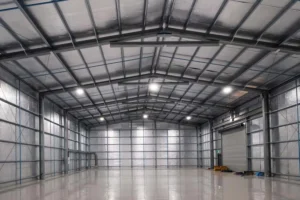
Contractors back New York’s Scaffold Law update
[ad_1]
Dive Brief:
- A bill from U.S. Rep. Nick Langworthy, R-N.Y., to exempt federally funded projects from New York state state’s Scaffold Law has a realistic path forward, most likely as part of a broader legislative package such as the upcoming federal surface transportation bill, said Mike Elmendorf, president and CEO of the Associated General Contractors of New York State.
- The bill could reduce liability insurance premiums by over 30% for contractors operating in the state, according to Elmendorf, where builders say absolute liability rules have inflated project costs.
- The proposal comes as Congress begins work on the next surface transportation reauthorization, which will replace the Infrastructure Investment and Jobs Act when it expires in 2026.
Dive Insight:
New York’s Scaffold Law, a safeguard for high-risk construction work, imposes absolute liability on property owners and contractors for gravity-related injuries, regardless of a worker’s negligence. A shift to a comparative negligence standard, where fault is divided between parties, would give contractors more legal protection but would make it harder for injured workers to recover full damages.
The proposed legislation could significantly lower the cost of public infrastructure construction in New York, according to the AGC.
For example, for a $20 million general liability coverage in New York, one firm reported paying $6.54 per $1,000 revenue, which is 31.3% higher than what they usually see in other states. For carpentry work, premiums can reach $17.37 per $100 of payroll, compared to just $3.19 in a more stable market like North Carolina, said Elmendorf.
“It’s substantial. It drives up the cost of construction, which results in less construction, fewer construction jobs,” said Elmendorf. “In particular, it hurts smaller contractors and MWBE firms who, in many cases, can’t get or afford the liability insurance that they would need.”
Elmendorf claimed the Scaffold Law added more than $200 million to the budget of the Mario Cuomo Bridge project.
Yet safety advocates warn that diluting New York’s scaffolding law would make it harder for workers to recover damages. Changes to absolute liability would reverse the safety gains of recent years and put workers at even greater risk of injury, according to a report from Leitner Varughese Warywoda, a New York City-based law firm.
“By holding owners and contractors strictly liable for elevation-related hazards, the Scaffold Law creates a powerful incentive to invest in safety,” the report says. “This preventative effect is credited with making New York’s worksites safer than they would be under a negligence standard.”
But Elmendorf pushed back against those concerns, saying the current standard penalizes even safety-conscious contractors while doing little to improve site conditions.
Under the absolute liability standard, contractors are held fully responsible for gravity-related injuries — even if a worker disregards safety protocols — unless the worker is the sole proximate cause of the incident.
“There is no evidence that suggests that this makes construction sites safer,” said Elmendorf. “In fact, it treats the unscrupulous contractor, if they end up in court, the same way as the contractor who does everything right. That’s wrong.”
[ad_2]
Source link
Post a Comment
You must be logged in to post a comment.






